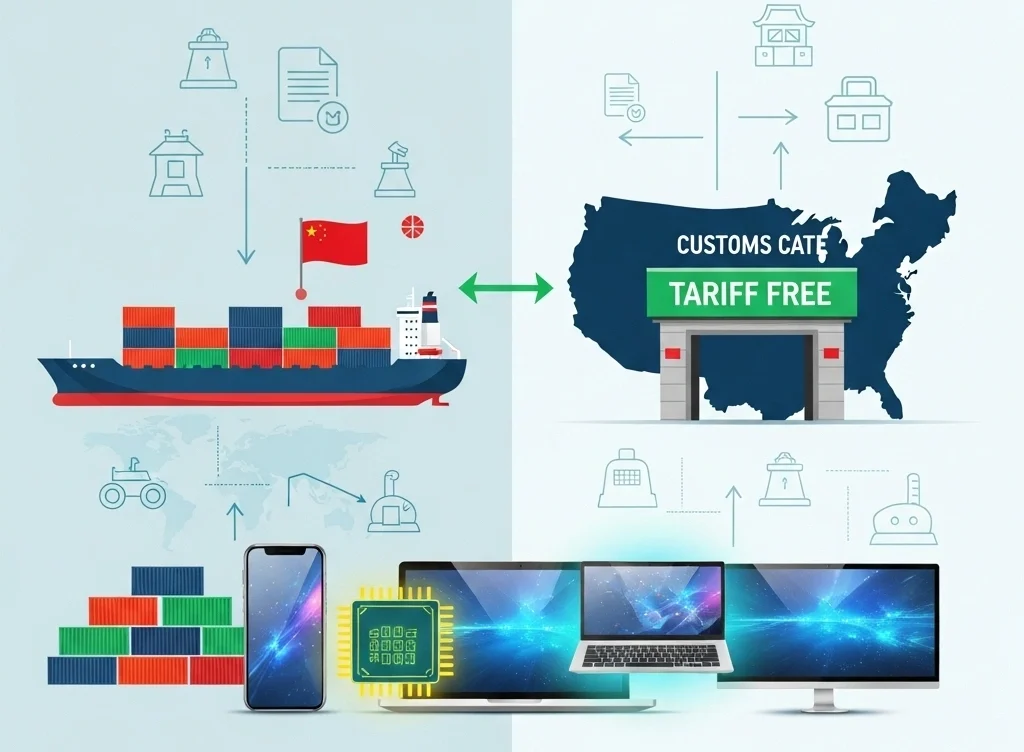
Which Chinese products are tariff-free in the U.S. — a practical guide for importers
The short answer: there is no blanket “tariff-free” status for Chinese goods entering the United States. Most imports from China are subject to ordinary U.S. tariffs — and since 2018 many Chinese products have faced additional, high-profile duties (Section 301 and more recent “reciprocal” tariffs). That said, specific products and specific HTS subheadings have been carved out of those additional duties via exclusion lists and executive actions. Below I explain how those exceptions work, give the common product categories that have recently been excluded, and tell you what to do next if you import from China.
How “tariff-free” exceptions actually work
- Two layers of duties to consider.
- Baseline tariffs: the Harmonized Tariff Schedule (HTS) duty rate that applies to an HTS subheading. These are the “normal” customs duties.
- Additional tariffs: extra duties added by measures such as Section 301 (China) and recently announced “reciprocal” tariffs. When people talk about goods being “tariffed,” they usually mean these extra duties. Many U.S. exemptions relate only to these additional tariffs, not to baseline HTS duties. (United States Trade Representative)
- Exclusion lists and temporary exemptions.
USTR and the White House publish exclusion lists (and sometimes extend them). If a product’s exact HTS subheading appears on an exclusion list, imports under that HTS may be exempt from the additional duty — but only if the goods are entered under the matching HTS code and meet any terms in the Federal Register notice. These exclusions are often time-limited and can be extended or allowed to expire. (United States Trade Representative) - De-minimis (low-value) rules changed.
Historically, small parcels under a value threshold could enter duty-free (de minimis). That treatment has been curtailed or removed in 2025 for many China/HK shipments and is being tightened for all countries, so low price alone no longer ensures duty-free entry. (Avalara)
Product groups that have recently been excluded (i.e., not subject to recent additional U.S. tariffs)
Note: these are examples of categories that have been put on exclusion/exception lists — not a guarantee that every single model or HTS line is exempt.
- Smartphones, laptops and certain personal computers / automatic data-processing machines.
In April 2025 the White House announced that many consumer electronics (smartphones, PCs, laptops) were excluded from the President’s reciprocal tariff list — meaning they would not carry that extra levy if entered properly. Always match the exact HTS subheading to the exclusion. (Reuters) - Storage devices and certain display modules.
Items like SSDs / nonvolatile memory and particular flat-panel display modules were listed among electronics excluded from the extra reciprocal tariffs in the April 2025 action. (WilmerHale) - Certain semiconductors and electronic components.
The government has carved out semiconductors and some chip components from the reciprocal tariff list (though the administration is simultaneously pursuing separate semiconductor trade investigations). Again — check HTS. (Thompson Hine Martrade) - Specified solar-manufacturing equipment and other machinery on USTR exclusion annexes.
USTR’s Section 301 exclusion notices have included solar manufacturing equipment and various other industrial items in past extensions. These are typically listed with precise HTS numbers in the Federal Register. (Sandler, Travis & Rosenberg, P.A.)
Important caveats & red flags
- Exclusions are HTS-specific. If your product is not entered under the exact HTS subheading listed in the exclusion, the extra duty will apply. Misclassification risks large retroactive charges. (关税汇编)
- Exclusions are temporary and changeable. USTR has extended exclusions before — but they can expire. Track the Federal Register notices and USTR announcements. (United States Trade Representative)
- De-minimis is no longer a safe assumption. Don’t rely on low parcel value to avoid duties. Recent rule changes and executive actions tightened or removed de-minimis benefits for China and are being extended to other countries. (Avalara)
Practical checklist for importers
- Find the 10-digit HTSUS code for your product (not just a general description). Customs duty treatment depends on the 10-digit number.
- Search USTR exclusion lists and the Federal Register for that HTS number (Section 301 exclusions, and any White House reciprocal-tariff exclusions). USTR’s Section 301 pages and the Federal Register notices are authoritative. (United States Trade Representative)
- Document classification carefully. Keep technical specs, invoices and classification rationale in case CBP questions the entry.
- Watch dates. If an exclusion has an effective range, ensure the goods were entered within that date window. (United States Trade Representative)
- Consider customs brokerage help. For borderline cases or high value shipments, work with a customs broker or trade lawyer to avoid misclassification and unexpected liabilities.
Bottom line
There is no universal tariff-free list for Chinese exports to the U.S. — but specific products (notably many electronics categories such as smartphones, laptops, certain storage/display items, some semiconductors, and particular solar manufacturing equipment) have recently been carved out of the additional tariffs via exclusion notices and White House actions. Those exceptions are HTS-specific, subject to time limits, and do not eliminate baseline HTS duties or other regulatory checks. (Reuters)
